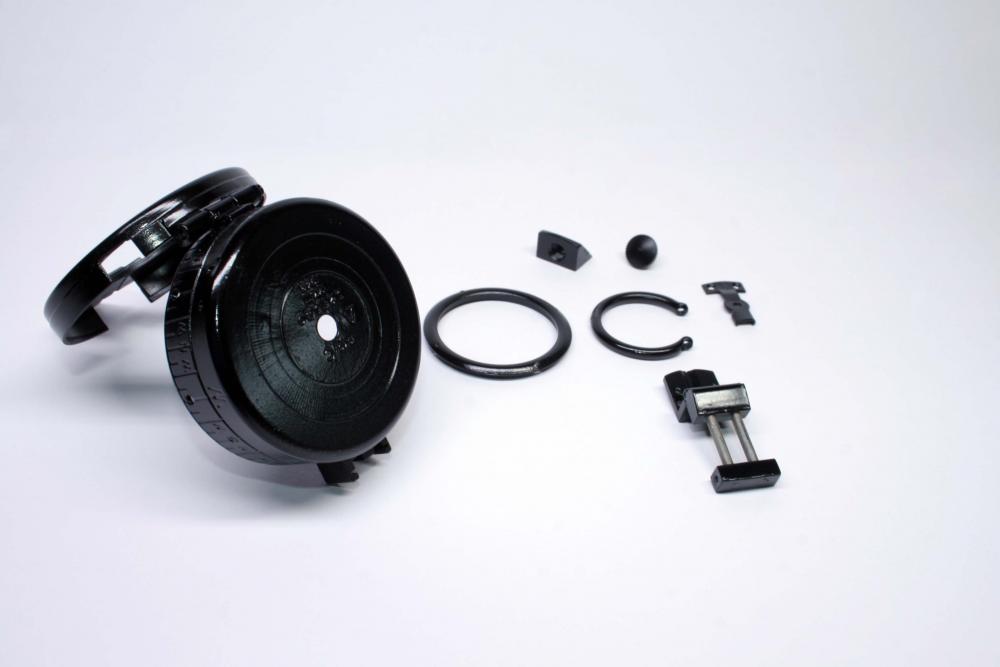Search the Community
Showing results for 'Radium'.
-
Should I be worried about radium?
syfre replied to danizzz's topic in Chat About Watches & The Industry Here
This is not a radium dial. Never touch a radium dial -
Hi everyone! So I found this guy lying in the bottom of a pile of parts watches and was wonder if someone could help me identify it? I would like to dive in and fix it up but I have a bit of a concern when it comes to the possibility of radium dials. I see so see what looks like luminous dots at the hour indicators but I don’t know what it is. Any thoughts would be great! Thanks!
-
Way back in the day , the ladies who painted radium dials had all sorts of health problems.They would sharpen the point of their brush by putting it in their mouth. As a precaution, wear gloves, wash hands and do not lick the dial.
-
Don’t worry about radium dials. I used to handle them for years and I have not grown two heads. This is just one you have found. You need to remove the hands and dial and take a good clear photo of the keyless work. That is the way to I D watch movements.
-

Should I be worried about radium?
TexasDon replied to danizzz's topic in Chat About Watches & The Industry Here
In another life, I was a crew member of a nuclear powered submarine for 2+ years. On my first deployment one of the nuclear twidgets who worked on the reactor came into the senior petty officer berthing area with a geiger counter. After taking a couple of readings, he zeroed in on me. My watch with radium lume was setting off the compartment radiation counter. My watch was confiscated and placed in a lead container for the duration of the patrol. I was told to take it home and not bring it back aboard afterwards. I was also told that the radiation emitted wasn't in the least dangerous to me but that it posed a pain in the butt for the on-board radiation monitoring system. I'm assuming that he knew his subject matter. In any event, I sold the watch and bought another so that I could have a timepiece on my wrist while working aboard. -
Beware of inhaling the radium dust from the dial and hands. The half-life is 1600 years. In the body it goes into the bones and irradiates the bone marrow all your life. The radon gas that comes out is not really bad, also the direct radiation is not dangerous at a some distance.
-

Should I be worried about radium?
AndyHull replied to danizzz's topic in Chat About Watches & The Industry Here
If you want to read a more scientific assessment of the toxicity of radium specifically as opposed to ionising radiation in general, this might be of interest -> https://www.atsdr.cdc.gov/toxprofiles/tp144.pdf Do bear in mind though that infrequent exposure while working with a few watch dials, if you use sensible precautions is till relatively low risk. Low risk, does not mean no risk, so do take care to minimises exposure. -

Dial (face) cleaning?
barkerka replied to 64americandeluxe's topic in Dial / Hands Cleaning and Restoration
It would appear that some have had in the past on the hands and numerals (radium?) -
Dial (face) cleaning?
JohnR725 replied to 64americandeluxe's topic in Dial / Hands Cleaning and Restoration
Would these dials by some chance have markers that glow-in-the-dark like with radium perhaps? -
A5, ok not made for Pioneer, but same movement as the ones made for Pioneer, as Vinn3 says getting hard to find now and collectable. Only other thing I can add is the dial and hands will have radium paint on it, not really an issue unless you service it, but then only an issue if you are not careful about the dust from it and don't wash your hands afterwards.
-
German "Kasper" ladies watch, Art Deco 1940's
Delgetti replied to Endeavor's topic in Your Walkthroughs and Techniques
Very nice, looking forward to the assembling pics. Is that luminous material on the dial and hands? I must admit that I'm quite afraid of radium in watches of that era. -
It will be Radium. Easy to deal with on the hands, not so much on the dial.
-
If that’s Radium on the dial then please take suitable precautions. It’s now recommended that you also ventilate well due to radon gas.
-
I have done a few radium hands before . I remove it by putting it on a tape. That way it won't fly around . But there is always dust particules inside the watch. I will see what i do?
-
Just be REALLY CAREFUL messing with radium. Put paper down on your work bench, wear gloves and a dust mask. That stuff is really evil, and unless you have a Geiger counter, you have no way of mowing just how dangerous it is. I sound like a Nancy but seriously: be very careful with it!
-
Dial (face) cleaning?
StuartBaker104 replied to 64americandeluxe's topic in Dial / Hands Cleaning and Restoration
This can be a very difficult area, but here is my experience... Enamel dials found on pocket and very old wristwatches can usually be cleaned with all manner of chemicals and rubbing... just beware that some have over-printing with a retailer’s name which may be fragile, as will any luminous markers, which will also likely be radium paint if they are original. Later watches mostly have painted dials which are usually covered with a clear lacquer. Sometimes the printing is on top of the lacquer and sometimes underneath. Sometimes the lacquer can be stripped and replaced without damaging the dial. And here is the experience of someone who has done a lot more of this than I have... http://watchguy.co.uk/cleaning-and-preserving-original-finish-on-dials/ -
I have started this as a new thread as it was taking the original way off topic and I did want to comment; health issues are never unimportant.The original thread that inspired this post is here; https://www.watchrepairtalk.com/topic/903-elma-master-watch-cleaning-machine-wiring-diagramuser-manual/?page=12 There seems to be a lot of difference of opinion regarding the relative risks associated with exposure to asbestos, and as someone who has a small degree of experience in respect to this subject I thought I would put my point of view, although it is not my intention to challenge anyone elses opinion or to claim any particular expertise. For my day job I am a Senior Consultant specialising in waste management for a large environmental consultancy and one of the areas in which we operate, and in which I have had some involvement, is asbestos surveying and remediation management. As a result of the inevitable potential exposure to asbestos that this work implicitly involves the company policy has always been "it takes just one fibre to kill". This is hardly surprising since Health & Safety regulations will hold the Company responsible for any ill effect that can be shown to have been caused by exposure to asbestos in the line of duty unless the Company can demonstrate that it has taken all possible precautions to protect its work force, with the inevitable ensuing litigation. By adopting the "no safe level of exposure" philosiphy the Company is hoping to establish a culture of fear of the stuff that is more designed to keep it out of the courts than it is based on any scientific research (or is that just my cynisism?). However, I don't think that there is anybody out there who would deny that the is a link between exposure to asbestos and a variety of respiratory conditions, some of which can be fatal. There is a discussion here; https://www.watchrepairtalk.com/topic/903-elma-master-watch-cleaning-machine-wiring-diagramuser-manual/?page=12 which examines the "it takes just one fibre to kill" theory and tests it against some statistics (I know, "lies, damned lies, and statistics") and comes up with a strong argument to support the idea that the issues are more associated with prolonged exposure and an accumulation of fibres, rather than a single fibre. It's an interesting read. In the interest of balance though there is also this article; https://www.asbestosnetwork.com/blog/2017/09/how-much-asbestos-exposure-is-harmful-there-is-no-safe-amount.shtml which sets out the view that any exposure should be avoided. My own personal opinion has always tended towards the "no safe level" approach as I am naturally somewhat risk averse. However, 2017 saw the issue come a bit too close to home for me when my eldest brother was diagnosed with mesothelioma, which has in turn been linked (with sufficient confidence for the insurance company to pay out) to a single exposure to asbestos some 40 or so years ago. He is a retired teacher who has never had any direct involvement in the asbestos industry, but who had the misfortune to be in the building at the school he worked at during some holiday refitting. British schools are riddled with the stuff from works carried out between the 1940's and the 1990's (ish) and he spent 1 day in the building without any PPE. Consequently my own risk averse stance has become even more entrenched. The rationale behind my attitude is simple (and applies equally to the Radium issue in which I do have some level of training and competence having spent 5 years as the Company Radiation Protection Supervisor), and goes like this. A single, low dose exposure, can cause health issues which can be serious or even fatal, however the probability is relatively low. Repeated exposure resulting it an ever increasing cumulative dose will result in an ever increasing risk. I can't see into the future to know whether or not or how often I am going to be unavoidably exposed to the hazard, and therefore whether or not he accumulated exposure is ever going to go critical. I therefore treat any exposure as something to be avoided on the grounds that it may help in keeping any potential future unavoidable exposures below the tipping point. In short, there is no safe level of exposure. Stay safe in 2018 people, Happy New Year.
-

Elma Watch Cleaning Machine
jdm replied to SSTEEL's topic in Watch Cleaning Machines / Ultrasonic Cleaners / Case Refinishing
Zero worries. If it was dangerous for final users or inhabitants of these materials we would be all dead now. Just as with Radium, it's the continued (as in many years) exposure (inhalation) in manufacturing environments that kills. -
you know, it's funny you should ask that... I worked for years as a biochemist and we used a lot of P32, so of course I had to learn all the OSHA safety regulations for handling radioactive materials etc... but I'm retired now and I didn't take any of the geiger counters home from the lab... but I understand there's actually an app for that! If you go to http://www.radiation-watch.org, I think they've developed a little plug in device that goes on your iPhone and turns it into a rough kind of geiger counter... I don't think it's very good at picking up gamma, but I'm not sure, I'd have to read the specifications more closely... but it might not be a bad investment if it's not too expensive... I mean, I'm really careful but I do see a lot of the old radium dials, and sometimes the crystals are either smashed up or gone, so it might be good idea to monitor my work area more closely... anyway, I take it from the mostly thundering silence that no one knows how these dial markers are removed????? or perhaps wls1971 is absolutely correct and the numbers are embossed and not removable... so how does International Dial do such a good job reprinting these? I guess the pad printer just prints right over the embossed numbers...? hmmmmm....
- 10 replies
-
- dial
- restoration
-
(and 1 more)
Tagged with:
-
As for being aware of radium dials - yeah, I'm pretty aware of them. check out my user name!!!!!!
- 10 replies
-
- dial
- restoration
-
(and 1 more)
Tagged with:
-
Just finished this Helvetia Cal 831. Nice quality movement with capped escape wheel jewel and unusual adjuster. Fitted a new mainspring, strap and crystal. It's beating away nicely at 300° amplitude. I love this style of watch, and like the fact that you can buy such a good quality watch off the bay for so few £££. I've recently repaired a couple of friends watches - both Rotary with horribly cheap and nasty Chinese movements and 4x what I paid for this. This is the first watch I've removed the radium from the dials and hands. After reading up on the hazards, I wasn't taking any chances, working with a mask and gloves.
-
Francis Barker Mk III Compass
RyMoeller replied to RyMoeller's topic in Relax Zone: Chat About Anything Here
Update on the compass project- After stripping the case clear of paint I found that I forgot to strip the brass ring containing the top crystal, so the crystal was pushed out with the press and the ring stripped of paint. For whatever reason this particular part was not plated prior to painting but was simply black paint on brass. All the parts where then primed and painted with black lacquer. I tried to match the original look by selecting a semi-gloss but kind of wish I'd gone for a simple flat black. Regardless, I'm sure it will look fine in the end. I'll allow the lacquer to cure for a few days before repainting the markings on the exterior of the case in white. Setting the parts aside to let the lacquer cure, I returned to the compass bowl which had troubled me as the filler plug was secured quite well. A good soak in thinner and a proper sized screwdriver eventually freed the plug from the bowl. The fiber gasket was soaked with varnish as well and needed to be coaxed carefully from filling hole- I'll need to find a replacement that is just the right size. Below you can see the gasket still tightly glued in the hole. Lastly I turned my attention to the crystals. The crystal for the bowl was badly stained but this cleaned up with a bit of Dialux compound the rotary tool. Sadly the lubber line had become a bit faint during cleaning. The same happened with the degree markings on the rotatable crystal. Since the degree markings and lubber line are etched into the crystal, I simply needed to fill the etchings with a bit of black enamel. When the enamel dries, some thinner and pegwood will be used to remove the excess from outside the etchings. The crystal for the case lid was chipped and didn't survive being pushed out of the ring so a replacement was ordered yesterday. I also ordered a couple tritium tubes to replace the luminous radium paint. More to come soon. -
Movement id & winding stem/case design ?
rogart63 replied to bsoderling's topic in Watch Repairs Help & Advice
Have a few of this looking like that movement. Common that there is no name on them. You will have to do some searching the net for similar movement and try to find. Maybe it's a AS but that just a guess. Search by 15 jewels and the size of the movement. probably a 10,5 ligne? Sub second narrows it down maybe? Approx year. Name on watch could also help. And take care as that is probably a radium dial and hands? -
Dial (face) cleaning?
RyMoeller replied to 64americandeluxe's topic in Dial / Hands Cleaning and Restoration
Well personally I'd leave it as it is. Most of the data elements of the dial are still visible and there is good contrast between the colors. Sending out for a restoration will return a dial that will probably look a bit too good for the case (assuming the case has seventy years of wear on it as well). Lastly that dial is swimming with radium and should be handled as little as possible. It's a nice piece too by the way. -
Looks a very nice watch with a well finished movement. The hands look lumed. Be careful when cleaning. The lume could be radium Sent from my SM-T585 using Tapatalk

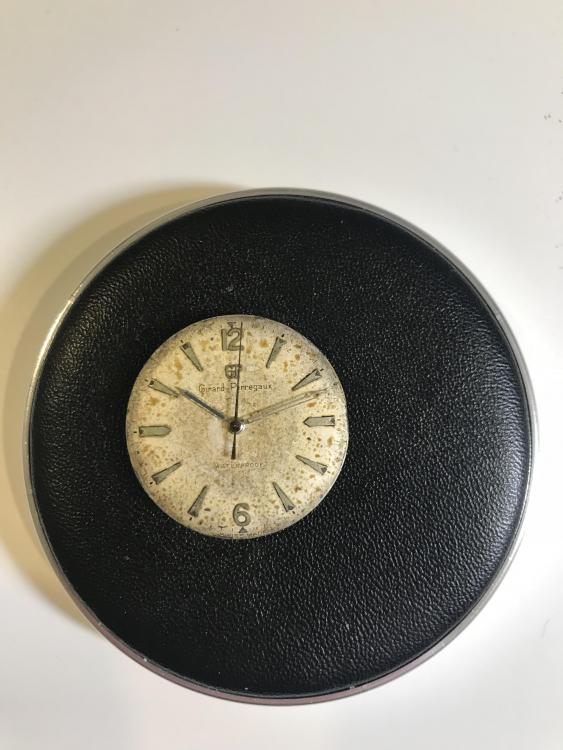
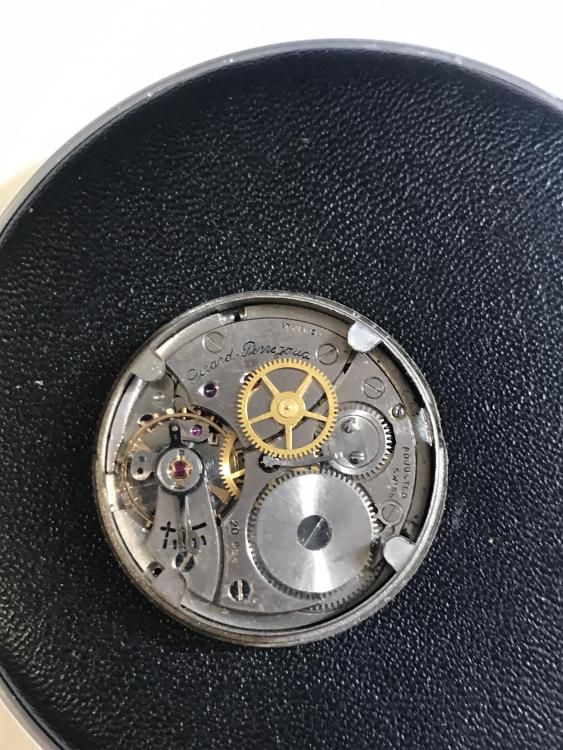





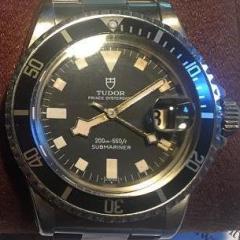


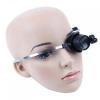

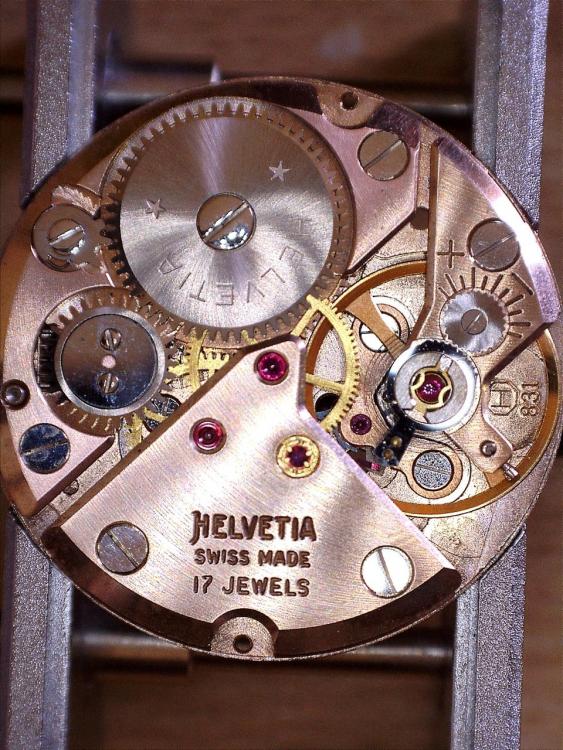
.thumb.jpg.ec1ad92b5da00e8f81a1fba61282184c.jpg)
.thumb.jpg.6bedf3bc856230e3603b89f4d7ecf9df.jpg)
